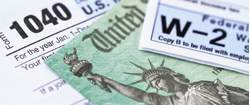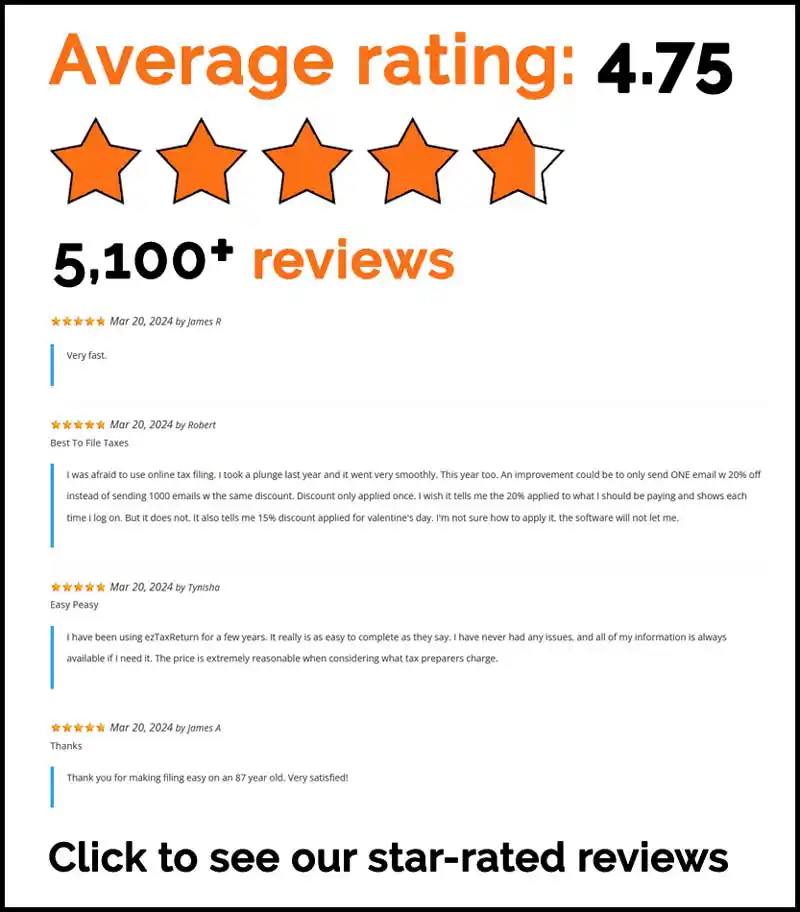It’s that time of year again—tax season. The tax return filing due date is crucial because it determines the last day you can make contributions to retirement accounts like IRAs or HSAs and still qualify for tax deductions. And if you’re like most people, you’ve probably put it off until the last minute. Maybe you’ve been too busy or just hoping it would go away (spoiler alert: it won’t!). But don’t panic—there’s still time to get your taxes filed. With the right strategy, you can file your taxes quickly, accurately, and without too much stress. Here are some practical tips to help you get it done, even if you’re a procrastinator.
1. Get Organized—Quickly!
First things first procrastinators, you need to get organized. It might sound like a lot of work, but taking just a few minutes to gather your documents can save you hours of stress later on. Here’s what you’ll need to get started:
- W-2 forms from your employer(s).
- 1099 forms for freelance or contract work.
- Receipts for any deductible expenses (business expenses, medical bills, charitable donations, etc.).
- Last year’s tax return, which can be a helpful reference.
Additionally, consider any significant life events from the past year, such as having a child or selling stocks, as these can impact your tax return. For a full list of things you may need, check out our Tax Prep Checklist.
If you don’t have physical copies of these forms, log in to your online accounts (like your employer’s payroll site) and download them. Create a digital or physical folder to store everything so you don’t waste time searching for documents later.
2. Choose the Right Tax Forms and Filing Method
Now that you have your documents, it’s time to decide how you’ll file. As a procrastinator, efficiency is key, so consider these options:
- Tax Software: Using tax software like ezTaxReturn is highly recommended for procrastinators. It simplifies the filing process by guiding you step by step, ensuring you don’t miss any important details. The software automatically completes the right tax forms for you, providing peace of mind and accuracy. Plus, ezTaxReturn offers free federal filing for simple returns, making it a cost-effective choice.
- Free Filing Options: If your income is below a certain threshold, you might qualify for IRS Free File or other free filing services. These options are streamlined and efficient, perfect for those who need to file quickly.
By choosing the right method, you can file your taxes swiftly and accurately, even at the last minute.
3. Don’t Let Perfection Be the Enemy of Progress
It’s easy to get bogged down by trying to perfect every little detail. However, it’s better to submit an imperfect tax return and correct mistakes later than to miss the deadline entirely. Prioritize accuracy over perfection; when you’re in a rush, focus on getting your numbers right, such as your income, deductions, and credits, without stressing over every tiny detail. Remember, you can always amend your return later if necessary. Additionally, consider e-filing for speed. Filing electronically instead of mailing a paper return is faster and more reliable, and it accelerates your refund if you’re expecting one.
4. Understand Your Deadline—And Potential Extensions
Mark your calendar—this year’s tax filing deadline is April 15. Missing this date could lead to penalties and interest on any amount you owe. However, if you’re pressed for time, you can request an automatic 6-month extension to submit your return. Keep in mind, an extension only grants more time to file, not to pay. If you owe taxes, you’re still required to estimate and pay by the original deadline. For procrastinators, this means you get extra time to gather your documents and overcome any last-minute hurdles without the pressure of an immediate filing deadline, but you must still tackle the payment task promptly to avoid additional penalties.
Despite the extension, you are still responsible for paying any taxes due by the filing deadline. Missing the tax deadline can result in several penalties if you owe money. The IRS imposes a failure-to-file penalty, which is typically 5% of the unpaid taxes for each month or part of a month that your return is late, up to a maximum of 25% of your unpaid taxes. Additionally, there’s a failure-to-pay penalty, generally 0.5% of the unpaid taxes for each month the taxes remain unpaid, also up to 25% of your unpaid taxes. Interest on unpaid taxes compounds daily from the due date of the return until you pay in full. Therefore, to avoid these penalties and interest, it’s crucial to file and pay any owed taxes by the original deadline or as soon as possible.
5. Maximize Your Deductions and Credits (Fast!)
Even if you’re filing late, there are still effective ways to maximize your deductions and credits, which can significantly reduce your tax bill or increase your refund. As a procrastinator, time is of the essence, so focus on these quick-win strategies to get the most out of your tax return:
Standard Deduction vs. Itemized Deductions
For most taxpayers, the standard deduction is the simplest route and often provides the largest benefit. Here are the standard deductions for each filing status:
- Single: $14,600
- Married Filing Jointly: $29,200
- Married Filing Separately: $14,600
- Head of Household: $21,900
However, if you’ve incurred significant expenses like medical bills, mortgage interest, or charitable contributions, itemizing might be more beneficial. Itemizing allows you to deduct specific expenses, potentially lowering your taxable income more than the standard deduction would. Here are some common itemized deductions:
- Medical and Dental Expenses: Deductible if they exceed a certain percentage of your adjusted gross income.
- State and Local Taxes (SALT): Includes state income, sales, and property taxes.
- Mortgage Interest: Interest paid on a mortgage for your primary or secondary residence.
- Charitable Contributions: Donations to qualified organizations.
- Casualty and Theft Losses: Losses from federally declared disasters.
By understanding the differences between the standard deduction and itemized deductions, you can choose the option that maximizes your tax benefits.
Common Tax Credits
Tax credits directly reduce your tax bill, and some of the most impactful ones include the Earned Income Tax Credit (EITC) and the Child Tax Credit. These credits can significantly lower the amount you owe or increase your refund. It’s essential to verify your eligibility for these credits, as they can make a substantial difference in your financial outcome.
- Earned Income Tax Credit (EITC): Designed to benefit low to moderate-income working individuals and families, this credit can significantly reduce the amount of federal tax owed and may even result in a refund.
- Child Tax Credit: Provides financial relief to taxpayers with dependent children, offering a credit for each qualifying child under a certain age, which can reduce the tax bill or increase a refund.
- American Opportunity Credit: Aimed at helping students and their families with the cost of higher education, this credit covers qualified education expenses for the first four years of post-secondary education.
- Lifetime Learning Credit: Offers financial assistance for individuals pursuing education and training, applicable to tuition and related expenses for courses taken to acquire or improve job skills.
- Savers Credit: Encourages low to moderate-income individuals to save for retirement by offering a credit for contributions made to retirement accounts like IRAs or employer-sponsored plans.
These credits can be a powerful tool in reducing your tax liability, so be sure to explore and claim any that you qualify for.
Last-Minute Deductions
Both IRA and HSA contributions offer a chance for last-minute deductions, as contributions to these accounts can be made up until Tax Day and still count for the previous tax year. This flexibility helps maximize tax benefits, even if you’re filing at the last minute.
- IRA Contributions: Contributing to a traditional IRA can reduce your taxable income, as contributions may be deductible based on your income and if you or your spouse are covered by a work retirement plan. The contribution limit is $7,000, or $8,000 if you’re age 50 or older.
- HSA Contributions: Health Savings Accounts (HSAs) allow tax-deductible contributions, with funds used tax-free for qualifying medical expenses. For 2024, limits are $4,150 for individuals and $8,300 for families, plus a $1,000 catch-up for those age 55 or older.
Making these contributions before the tax filing deadline can reduce your taxable income and potentially increase your refund, supporting your long-term financial goals.
6. Avoid Common Procrastinator Pitfalls
Procrastinators often fall into the trap of rushing and making avoidable mistakes. Here are some common errors to watch out for:
- Missing Forms: Double-check that you’ve included all necessary forms. Even if you filed online, it’s easy to forget about some forms, especially if you receive multiple 1099s.
- Incorrect Information: Typos and missing digits can lead to delays or penalties. Always double-check your Social Security number, bank account numbers, and income figures.
- Forgetting Deductions: In your rush to file, don’t forget to claim any deductions you’re eligible for, like home office expenses or student loan interest. These can reduce your taxable income.
7. Keep Track of Your Tax Return, Refunds, or Payments
Once you’ve submitted your return, track your refund (if you’re getting one). The IRS allows you to check your refund status on their Where’s My Refund tool.
If you owe taxes, it’s important to stay on top of your payments. Fortunately, the IRS offers several payment options to help you manage your tax bill effectively. Here are the methods you can use:
- Direct Debit: Set up automatic payments from your bank account for convenience.
- Credit Card: Pay your taxes using a credit card through authorized payment processors.
- Check or Money Order: Mail a check or money order to the IRS with your payment voucher.
- IRS Installment Plan: Arrange a payment plan with the IRS if you can’t pay the full amount immediately.
- Electronic Funds Withdrawal: Make an electronic payment directly from your bank account when filing your return electronically.
These options provide flexibility, ensuring you can choose the method that best suits your financial situation.
Conclusion
Even though it’s last minute, don’t panic! By following these simple tips, you can file your taxes efficiently and accurately, even if you’re a notorious procrastinator. The key is to stay organized, keep things simple, and don’t stress about making everything perfect.
So, take a deep breath, gather your documents, and get started today. The sooner you begin, the sooner you’ll be done. And hey, once it’s over, you can kick back and enjoy the rest of the year without that looming tax deadline hanging over you.
The articles and content published on this blog are provided for informational purposes only. The information presented is not intended to be, and should not be taken as, legal, financial, or professional advice. Readers are advised to seek appropriate professional guidance and conduct their own due diligence before making any decisions based on the information provided.




